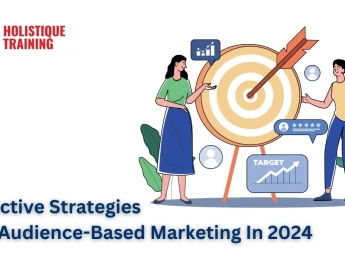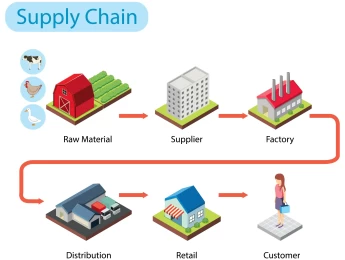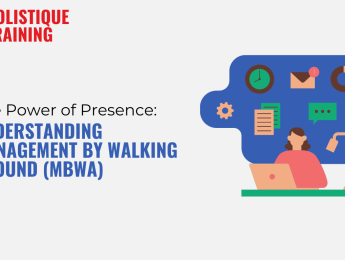- Table of Contents
- Introduction
- What is Audience-Based Marketing?
- Principles of Audience-Based Marketing
- Data-Driven Decision Making
- Segmentation
- Personalisation
- Engagement
- Adaptability
- Different Types of Target Audience
- Demographic Segmentation
- Geographic Segmentation
- Behavioural Segmentation
- Psychographic Segmentation
- Firmographic Segmentation
- How to Identify Your Target Audience
- Analyse Existing Customer Data
- Conduct Market Research
- Utilise Analytics Tools
- Create Buyer Personas
- Monitor Industry Trends
- Benefits of Audience-Based Marketing for Your Business
- Increased Engagement
- Higher Conversion Rates
- Enhanced Customer Loyalty
- Optimised Marketing Spend
- Improved Brand Reputation
- Better Insights into Customer Needs
- Facilitated Innovation and Adaptation
- Enhanced Customer Experience
- Advanced Audience Targeting Strategies
- 1. Psychographic Targeting
- 2. Platform-Based Targeting
- 3. Usage-Based Targeting
- 4. Predictive Targeting
- How to Get Started with an Audience-Based Approach
- 1. Conduct Comprehensive Market Research
- 2. Define Your Target Audience Segments
- 3. Develop Tailored Marketing Strategies
- 4. Implement Targeted Campaigns
- 5. Gather Feedback and Refine Strategies
- 6. Foster Customer Relationships
- Challenges of Audience-Based Marketing
- Data Privacy Concerns
- Resource Intensive
- Changing Consumer Preferences
- Over-Segmentation
- Measurement Difficulties
- Conclusion
Introduction
Creating marketing strategies that resonate with consumers can significantly impact a business's success. This blog post will delve into the concept of audience-based marketing, an approach that focuses on understanding and targeting specific market segments. By exploring its principles, various audience types, methods for identification, benefits, advanced strategies, implementation steps, and potential challenges, businesses can equip themselves to reach and engage their desired consumers effectively.
What is Audience-Based Marketing?
Audience-based marketing is a strategic approach that centres on identifying and targeting specific groups of consumers based on their characteristics, preferences, behaviours, and needs. Unlike traditional marketing, which often casts a wide net to reach as many people as possible, audience-based marketing narrows the focus to engage more meaningfully with a select audience. This targeted method allows marketers to deliver personalised messages that resonate with individual consumer segments, ultimately leading to higher conversion rates and improved customer loyalty.
By analysing data and insights, businesses can create tailored campaigns that address different audience segments' unique interests and pain points. This approach enhances the relevance of marketing messages and fosters stronger connections between brands and consumers.
Principles of Audience-Based Marketing
Audience-based marketing operates on several key principles that guide its implementation:
Data-Driven Decision Making
Successful audience-based marketing relies heavily on data analysis. By leveraging customer data, businesses can gain insights into consumer behaviours, preferences, and demographics, allowing them to make informed decisions.
Segmentation
This principle involves dividing the broader market into smaller, manageable groups based on shared characteristics. Effective segmentation enables marketers to tailor messages that speak directly to each group's unique needs and desires.
Personalisation
The essence of audience-based marketing lies in its ability to deliver personalised content and experiences. By understanding the specific interests and pain points of different segments, businesses can craft messages that resonate more deeply.
Engagement
Engaging consumers through meaningful interactions is vital for building relationships and fostering loyalty. Audience-based marketing emphasises creating content encouraging two-way communication between brands and their target audience.
Adaptability
Consumer preferences and behaviours are constantly evolving. Audience-based marketing requires flexibility and the willingness to adapt strategies based on changing market dynamics and consumer feedback.
Different Types of Target Audience
Understanding the various types of target audiences is crucial for effective audience-based marketing. Here are some common categories:
Demographic Segmentation
This type involves categorising consumers based on demographic factors such as age, gender, income level, education, and marital status. This information helps marketers understand their audience's basic characteristics.
Geographic Segmentation
Geographic segmentation focuses on consumers' locations, including countries, regions, cities, or neighbourhoods. This approach allows businesses to tailor their marketing strategies to suit various areas' cultural and economic differences.
Behavioural Segmentation
This segmentation is based on consumer behaviours, such as purchasing habits, brand loyalty, product usage, and online interactions. Understanding these behaviours helps marketers anticipate consumer needs and preferences.
Psychographic Segmentation
Psychographics delve deeper into consumers' values, interests, lifestyles, and personality traits. This type of segmentation allows businesses to connect with consumers more emotionally, making marketing messages more impactful.
Firmographic Segmentation
In B2B marketing, firmographics classify audiences based on characteristics related to companies, such as industry, company size, revenue, and location. This segmentation helps businesses identify and target potential clients effectively.
Criteria | Target Audience | Target Market |
Definition | Specific group for marketing campaigns. | Larger group potential buyers belong to. |
Focus | Individual preferences and behaviours. | Overall demographics and characteristics. |
Size | Smaller and more defined segment. | Larger and broader segment of consumers. |
Engagement | Tailored content to enhance interaction. | General messaging for wider reach. |
Purpose | Increase conversion through targeted efforts. | Identify potential sales opportunities. |
Examples | Young professionals interested in fitness. | All adults interested in health products. |
Table 1: Difference Between Target Market and Target Audience
How to Identify Your Target Audience
Identifying the right target audience is essential for successful audience-based marketing. Here are several steps businesses can take to uncover their ideal audience:
Analyse Existing Customer Data
Start by examining the profiles of current customers. Look for common characteristics, preferences, and purchasing behaviours that can help identify patterns.
Conduct Market Research
Use surveys, interviews, and focus groups to gather insights from potential and existing customers. This research will provide valuable information about their preferences, needs, and pain points.
Utilise Analytics Tools
Leverage analytics platforms to track user behaviour on websites and social media. These tools can provide insights into how consumers interact with your brand, helping to identify potential audience segments.
Create Buyer Personas
Develop detailed buyer personas that represent different segments of your audience. These personas should include demographic, psychographic, and behavioural information to help guide marketing strategies.
Monitor Industry Trends
Stay informed about industry trends and changes in consumer behaviour. This awareness will enable businesses to adapt their targeting strategies to meet evolving consumer expectations.
Benefits of Audience-Based Marketing for Your Business
Implementing audience-based marketing strategies can yield numerous business advantages, particularly in today’s dynamic and competitive landscape. By focusing on specific market segments rather than attempting to appeal to a broad audience, companies can tailor their marketing efforts to resonate more deeply with their consumers. Here are several key benefits of audience-based marketing that underscore its importance:
Increased Engagement
Engaging consumers is a critical component of any successful marketing strategy. Audience-based marketing enhances engagement levels by delivering content that is relevant and personalised to the interests and preferences of specific consumer segments. When marketing messages speak directly to the unique needs of individuals, they are more likely to capture attention and inspire action. For instance, a brand targeting outdoor enthusiasts with adventure-themed content is likely to elicit a positive response compared to a generic advertisement lacking specificity. This tailored approach fosters a sense of connection, encouraging consumers to interact with the brand, whether throughsocial media, website visits, or direct inquiries.
Higher Conversion Rates
One of the most significant benefits of audience-based marketing is its impact on conversion rates. By understanding the motivations and behaviours of different audience segments, businesses can create targeted campaigns that drive consumers toward specific actions—such as making a purchase, signing up for a newsletter, or engaging with content. For example, a company that identifies a segment of health-conscious consumers can develop personalised campaigns highlighting the health benefits of their products, leading to a higher likelihood of purchase. Research indicates that personalised marketing can lead to conversion rates that are significantly higher than those of non-targeted campaigns, underscoring the effectiveness of an audience-focused approach.
Enhanced Customer Loyalty
Building long-term relationships with customers is vital for sustained business success. Audience-based marketing fosters stronger connections between brands and consumers by consistently providing relevant content and addressing specific needs. When consumers feel understood and valued, they are likelier to develop brand loyalty. For instance, a company that tailors its communications and product offerings to meet the preferences of a specific demographic, such as young parents, can establish trust and rapport. This leads to repeat purchases and positive word-of-mouth recommendations, further enhancing brand loyalty.
Optimised Marketing Spend
In a world where marketing budgets are often limited, optimising spending is crucial for maximising return on investment (ROI). Audience-based marketing allows businesses to focus their resources on high-potential segments, minimising wasted expenditure on less relevant outreach. Companies can allocate budgets more effectively by analysing data to identify which segments will most likely convert. For example, suppose a business finds a particular demographic highly engaged with its products. In that case, it can concentrate its marketing efforts and budget on that group, increasing the likelihood of successful outcomes and reducing overall costs.
Improved Brand Reputation
A positivebrand reputation is invaluable for attracting and retaining customers. Audience-based marketing helps establish a brand as one that understands and addresses the unique needs of its consumers. By consistently delivering tailored messages and products, businesses can enhance their reputation as customer-centric and responsive. This perception fosters trust, leading consumers to view the brand more favourably. Furthermore, when consumers see that a brand values their preferences and feedback, they are likelier to share their experiences with others, contributing to a positive brand image and attracting new customers.
Better Insights into Customer Needs
Engaging in audience-based marketing encourages businesses to delve deeper into understanding their customers. The process of segmenting audiences and analysing data provides valuable insights into consumer behaviours, preferences, and motivations. These insights can inform product development, marketing strategies, and customer service approaches. For instance, if a brand discovers that a particular audience segment values sustainability, it can adjust its product offerings to include more eco-friendly options, thus aligning its brand with the values of its target consumers.
Facilitated Innovation and Adaptation
Audience-based marketing empowers businesses to be more innovative and adaptable in their approach. By closely monitoring consumer trends and preferences, brands can identify emerging opportunities and adjust their strategies accordingly. This adaptability is crucial in an ever-changing market landscape, where consumer expectations and technological advancements continuously evolve. Companies that stay attuned to their audience's changing needs are better positioned to introduce new products or services that align with those preferences, ensuring they remain relevant and competitive.
Enhanced Customer Experience
Ultimately, audience-based marketing leads to an improved customer experience. By tailoring interactions and content to individual segments, brands can create a seamless consumer journey. This experience encompasses every touchpoint, from personalised email communications to customised product recommendations. When customers feel that a brand genuinely understands and meets their needs, it results in a more satisfying experience. A positive customer experience encourages repeat purchases and drives customer advocacy, as satisfied consumers are more likely to recommend the brand to friends and family.
The benefits of audience-based marketing extend far beyond mere engagement. By focusing on specific consumer segments, businesses can drive higher conversion rates, foster loyalty, optimise their marketing spend, and enhance their brand reputation. Additionally, the insights gained through audience analysis facilitate innovation, adaptability, and an overall better customer experience. Adopting an audience-based approach will be essential for businesses seeking to thrive in a competitive landscape as the market evolves. By understanding their audience and delivering personalised marketing strategies, brands can establish lasting connections with consumers and drive long-term success.
Advanced Audience Targeting Strategies
In the realm of audience-based marketing, employing advanced targeting strategies is essential for maximising the effectiveness of campaigns and achieving desired business outcomes. These strategies go beyond traditional demographic targeting, allowing brands to connect with consumers deeper by tapping into their behaviours, preferences, and psychographics. Here’s an in-depth look at several advanced audience targeting strategies:
1. Psychographic Targeting
Psychographic targeting involves segmenting audiences based on psychological attributes, including values, interests, lifestyles, and personality traits. This strategy seeks to understand consumers' motivations and desires, allowing brands to create highly personalised and resonant marketing messages.
- Understanding Consumer Motivations
By examining the psychographics of their target audience, businesses can uncover what truly influences purchasing decisions. For example, a brand that sells organic skincare products might identify that its audience values sustainability and natural ingredients. With this insight, the brand can craft messaging emphasising eco-friendliness and ethical sourcing, appealing to consumers’ core beliefs. - Creating Tailored Campaigns
Psychographic data allows brands to develop campaigns that resonate emotionally with their audience. This could include using storytelling techniques that align with the audience's values or showcasing testimonials from relatable figures. Businesses can increase engagement and conversion rates by connecting on an emotional level. - Utilising Surveys and Data Analysis
Businesses can gather insights through surveys, social media analysis, and customer feedback to effectively implement psychographic targeting. Tools like Google Analytics and social listening platforms help analyse consumer behaviour patterns, enabling brands to fine-tune their marketing strategies accordingly.
2. Platform-Based Targeting
Platform-based targeting focuses on tailoring marketing efforts based on the specific platforms where the target audience engages with content. Understanding which channels are most effective for reaching different segments allows brands to optimise their messaging and placement.
- Leveraging Social Media
Different demographics gravitate toward different social media platforms. For instance, younger audiences may prefer Instagram and TikTok, while older consumers might engage more on Facebook or LinkedIn. By analysing platform demographics, businesses can tailor their content to fit the norms and preferences of each social media network, enhancing the likelihood of consumer interaction. - Optimising Ad Placement
Beyond organic content, platform-based targeting includes strategically placing ads where the target audience is most likely to engage. Tools like Facebook Ads Manager or Google Ads allow brands to specify their audience based on platform behaviour, interests, and demographics. This ensures that marketing messages are seen by the right people at the right time, increasing conversion opportunities. - Adapting Content for Each Platform
Each platform has its own set of conventions and content styles. For example, short, eye-catching videos may perform well on TikTok, while long-form articles may be better suited for LinkedIn. By customising content to align with platform-specific expectations, brands can enhance engagement and improve overall campaign effectiveness.
3. Usage-Based Targeting
Usage-based targeting segments audiences based on their interactions with a brand's products or services. By analysing user behaviour and preferences, businesses can tailor marketing efforts to specific segments based on how they engage with offerings.
- Identifying User Segments
Businesses can categorise consumers into segments based on their usage patterns—frequent users, occasional buyers, or first-time visitors. For example, a software company might identify heavy users who regularly engage with its platform and develop targeted campaigns that offer advanced features or exclusive content, thus encouraging them to deepen their engagement. - Personalised Recommendations
Usage data enables brands to create personalised product recommendations. For instance, an e-commerce site can analyse past purchases and browsing behaviour to suggest complementary products, enhancing the shopping experience and increasing the average order value. - Trigger-Based Marketing
Another effective approach within usage-based targeting is implementing trigger-based marketing strategies. These strategies send automated messages based on specific user actions, such as cart abandonment, product views, or purchase anniversaries. By responding to users' behaviours in real-time, brands can re-engage consumers and drive conversions.
4. Predictive Targeting
Predictive targeting uses data analytics and machine learning algorithms to forecast future consumer behaviour based on past actions. Businesses can proactively engage potential customers with tailored marketing strategies by identifying patterns and trends.
- Leveraging Data Insights
Predictive analytics draws from various data sources, including purchase history, online behaviour, and demographic information. By analysing this data, businesses can identify which segments are most likely to convert or which customers may require re-engagement, allowing for timely and relevant marketing efforts. - Improving Campaign Performance
By anticipating consumer behaviour, brands can refine their marketing strategies to align with predicted trends. For example, predictive analytics suggests that a certain segment will likely increase spending during a specific season. In that case, brands can launch targeted campaigns to capitalise on that behaviour, ensuring they capture the attention of potential customers at optimal times. - Enhancing Customer Retention
Predictive targeting can also be crucial in retaining existing customers. By analysing patterns that lead to churn, brands can implement proactive measures, such as personalised outreach or special offers, to keep customers engaged and satisfied.
Advanced audience targeting strategies, including psychographic, platform-based, usage-based, and predictive targeting, are essential for businesses seeking to enhance their marketing effectiveness. By understanding and applying these strategies, brands can create more personalised and impactful marketing campaigns that resonate with their target audience. The ability to connect on a deeper level not only increases engagement and conversion rates but also fosters long-term relationships with customers, ultimately driving business growth. As the marketing landscape evolves, embracing these advanced targeting techniques will empower businesses to stay ahead of the competition and deliver exceptional value to their consumers.
How to Get Started with an Audience-Based Approach
Implementing an audience-based marketing approach requires a structured strategy that prioritises understanding and addressing the needs of specific consumer segments. Here’s a step-by-step guide to help businesses effectively launch and execute this strategy:
1. Conduct Comprehensive Market Research
Market research serves as the foundation for understanding your audience. It provides valuable insights into consumer behaviour, preferences, and demographics.
- Identify Key Trends
Utilise both qualitative and quantitative research methods to gather data. This could include surveys, focus groups, and customer data analysis. Look for patterns that reveal what drives consumer decisions, emerging trends, and potential gaps in the market that your business can fill. - Analyse Competitors
Conduct a competitive analysis to understand how other businesses are targeting their audiences. Identify their strengths and weaknesses, marketing strategies, and customer engagement practices. This information can help you differentiate your approach and find opportunities for improvement. - Leverage Data Analytics Tools
Utilise tools such as Google Analytics, social media insights, andCRM software to gather data on your existing customers. Understanding user demographics, website interactions, and purchase history will help you create a more nuanced picture of your audience.
2. Define Your Target Audience Segments
Once you have gathered sufficient data, the next step is to define your target audience segments.
- Create Buyer Personas
Develop detailed buyer personas that encapsulate the characteristics of your ideal customers. Each persona should include demographic information (age, gender, income, location), psychographic traits (interests, values, lifestyle), and behavioural aspects (buying patterns, brand loyalty). - Segment Your Audience
Based on your research, categorise your audience into distinct segments. This can include demographic segments (age, gender), geographic segments (region, climate), psychographic segments (values, lifestyle), and behavioural segments (purchase frequency, product usage). Clearly defined segments will allow for more targeted marketing efforts.
3. Develop Tailored Marketing Strategies
Understanding your audience segments clearly allows you to create tailored marketing strategies that resonate with each group.
- Craft Personalised Messaging
Design messaging that speaks directly to each audience segment. Highlight the benefits of your products or services that are most relevant to them. For example, if targeting environmentally conscious consumers, emphasise sustainability efforts and eco-friendly practices in your messaging. - Choose Appropriate Channels
Select marketing channels that are most effective for reaching your target audience. Younger demographics may prefer social media platforms like Instagram or TikTok, while older audiences might respond better to email newsletters or Facebook ads. Tailoring your approach to the preferences of each segment enhances engagement and effectiveness. - Create Compelling Content
Develop content that resonates with your audience. This could include blog posts, videos, infographics, or social media updates. Ensure that the content is relevant and adds value, whether through education, entertainment, or inspiration.
4. Implement Targeted Campaigns
Once your strategies are developed, it’s time to execute targeted campaigns that bring your audience-based marketing approach to life.
- Use Data-Driven Advertising
According to Gitnux, as cited byTunnl, 76% of customers believe that targeted advertising aids in discovering new products, while 40% of consumers actually prefer receiving targeted ads. Leverage digital advertising platforms that allow for precise audience targeting. Tools like Google Ads and Facebook Ads enable you to segment your campaigns based on various parameters such as demographics, interests, and online behaviours. This ensures your ads reach the right people. - Test and Optimise
Implement A/B testing to compare different versions of your marketing campaigns. Test messaging, visuals, and calls-to-action variations to determine which resonates best with your audience. Use the results to optimise future campaigns for better performance. - Monitor Engagement Metrics
Track engagement metrics such as click-through rates, conversion rates, and social media interactions. Analysing these metrics will provide insights into your campaigns' performance and whether adjustments are necessary.
5. Gather Feedback and Refine Strategies
Audience-based marketing is an ongoing process that requires continuous evaluation and adaptation.
- Collect Customer Feedback
Actively seek customer feedback through surveys, reviews, and direct communication. Understanding their experiences, needs, and preferences will help refine your marketing strategies and product offerings. - Analyse Performance Data
Regularly review the performance of your marketing campaigns using analytics tools. Identify which strategies are yielding positive results and which need adjustment. Metrics like customer acquisition cost, return on investment, and customer lifetime value will inform your decision-making. - Adapt to Changing Preferences
Consumer preferences and market conditions can shift over time. Stay agile by adapting your strategies based on emerging trends, technological advancements, and changes in consumer behaviour. Continuous learning and adaptation are key to long-term success in audience-based marketing.
6. Foster Customer Relationships
Building and maintaining strong relationships with your audience is essential for sustained success.
- Personalise Customer Interactions
Use the insights gathered from your audience segments to personalise interactions at every touchpoint. This includes tailoring emails, providing personalised product recommendations, and engaging with customers on social media in a way that resonates with their interests. - Implement Loyalty Programs
Develop loyalty programs that reward repeat customers and encourage engagement. This not only fosters customer retention but also strengthens relationships with your audience. A well-designed loyalty program can offer exclusive discounts, early access to new products, or personalised rewards that resonate with your target segments. - Engage in Two-Way Communication
Encourage open communication with your audience through social media, surveys, and customer service channels. Engaging in two-way conversations builds trust and allows you to gain valuable insights into your customers’ evolving needs.
Getting started with an audience-based marketing approach requires a systematic and well-informed strategy. Businesses can effectively connect with their consumers by conducting thorough market research, defining target audience segments, developing tailored marketing strategies, implementing targeted campaigns, and continuously refining efforts based on feedback. The commitment to understanding and serving specific audience segments enhances marketing effectiveness and fosters long-term customer relationships that drive sustained business success. As the marketing landscape evolves, embracing an audience-based approach will be essential for brands seeking to thrive in a competitive environment.
KPI | Description |
Customer Engagement | Measures interaction with marketing content. |
Conversion Rate | Percentage of visitors completing desired actions. |
Customer Retention | Tracks repeat purchases and loyalty metrics. |
Return on Investment | Evaluates profitability of marketing campaigns. |
Audience Growth Rate | Monitors increase in target audience size. |
Table 2: KPIs of Audience-Based Marketing
Challenges of Audience-Based Marketing
While audience-based marketing offers significant advantages, it also presents challenges that businesses must navigate:
Data Privacy Concerns
With increasing regulations on data privacy, businesses must be cautious about how they collect, store, and use consumer data. Compliance with laws such as GDPR is essential to avoid legal repercussions.
Resource Intensive
Implementing audience-based marketing requires time, effort, and resources. Smaller businesses may struggle to allocate sufficient resources for data analysis and campaign personalisation.
Changing Consumer Preferences
Consumer preferences are not static. As trends and interests evolve, businesses must stay agile and adapt their strategies to meet shifting audience expectations.
Over-Segmentation
While segmentation is crucial, over-segmenting can lead to a fragmented marketing strategy. Businesses must balance targeting specific audiences and maintaining a coherent brand message.
Measurement Difficulties
Measuring the effectiveness of audience-based marketing can be challenging. Establishing clear metrics and tracking tools is essential for understanding campaign performance and ROI.
Conclusion
Audience-based marketing represents a powerful approach that enables businesses to connect with their target audience meaningfully. By understanding the principles, types of audiences, and identification methods, businesses can craft tailored marketing strategies that resonate deeply with consumers. Although challenges exist, the benefits of increased engagement, higher conversion rates, and improved brand loyalty make audience-based marketing a worthwhile investment. As consumer preferences evolve, businesses embracing this approach will be better positioned to thrive in a competitive marketplace. By taking proactive steps to implement audience-based marketing strategies, brands can foster lasting connections with their audiences and drive long-term success.
To further enhance your skills in this area, consider enrolling in our course,Strategic Digital Marketing Mastery. This comprehensive program equips you with the knowledge and tools needed to implement audience-based marketing strategies tailored to your business goals effectively. Join us to elevate your marketing expertise and position your brand for unparalleled success in the digital landscape.

























